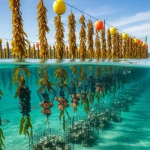Navigating the Global Water Crisis 2025: Innovations for a Thirsty Future
Water, the fundamental essence of life, faces an unprecedented global crisis intensified by climate change, burgeoning populations, and inadequate infrastructure management across diverse regions. By 2025, the challenges of water scarcity, pollution, and inequitable access will have reached critical thresholds, demanding sophisticated, multi-faceted approaches that transcend traditional solutions. This pressing issue transcends national borders, impacting agriculture, public health, economic stability, and ecological systems with far-reaching consequences that demand immediate, concerted global attention. Understanding the evolving dynamics of this crisis and highlighting the innovative strategies being deployed becomes absolutely paramount for securing a sustainable future for all inhabitants of our planet.
The Mounting Pressure: A Snapshot of 2025
The year 2025 finds a significant portion of the world’s population living under severe water stress, a condition where demand for fresh water outstrips available supply for a period. Regions already prone to aridity, like the Middle East and North Africa, experience exacerbated conditions due to persistent droughts and diminishing freshwater reserves. Rapid urbanization in developing nations places immense strain on existing water networks, often leading to insufficient supply and compromised sanitation services for millions of city dwellers. Furthermore, the pervasive pollution of rivers, lakes, and aquifers by industrial runoff, agricultural chemicals, and untreated sewage continues to deplete vital freshwater sources faster than natural processes can replenish them. This complex interplay of environmental degradation and increasing human need underscores the urgency for transformative action.
Technological Frontiers: Smart Solutions for Water Management
Innovation is at the forefront of combating the water crisis, with several technological advancements reaching critical maturity by 2025, offering tangible hope and practical application.
- Advanced Desalination Technologies:
New generations of desalination plants are emerging, drastically reducing energy consumption and operational costs previously associated with converting seawater into potable water. Revolutionary membrane technologies, such as forward osmosis and improved reverse osmosis with higher efficiency rates, are becoming more widespread in coastal areas facing acute water shortages. Furthermore, solar-powered desalination units are making fresh water production economically viable and environmentally sustainable in remote, off-grid communities. These modular systems provide localized water security without the need for extensive grid infrastructure. - Wastewater Treatment and Reuse:
The concept of wastewater as a valuable resource, rather than merely a waste product, is gaining significant traction and technological sophistication. By 2025, advanced tertiary treatment processes, including ultrafiltration and disinfection through UV light or ozone, enable the safe and efficient reuse of treated wastewater for agricultural irrigation, industrial processes, and even potable consumption in some forward-thinking municipalities. Decentralized wastewater treatment systems, powered by renewable energy, are also becoming common in rural and peri-urban areas, significantly improving sanitation and providing local water sources. This paradigm shift minimizes discharge pollution and maximizes resource efficiency. - Smart Water Networks and IoT Integration:
The integration of the Internet of Things (IoT) sensors and sophisticated data analytics into urban water networks is revolutionizing leak detection and consumption monitoring. Intelligent sensors embedded throughout pipelines transmit real-time data, allowing utilities to identify and repair leaks much faster, significantly reducing water loss that traditionally accounts for substantial wastage. Smart metering systems provide consumers with immediate feedback on their water usage, empowering them to make more informed and conservative choices regarding their consumption habits. These digital innovations create a more resilient and responsive water infrastructure, enhancing overall efficiency. - Precision Agriculture and Water-Efficient Farming:
Agriculture remains the largest consumer of freshwater globally, necessitating a revolution in irrigation practices. In 2025, precision agriculture technologies, leveraging satellite imagery, drone surveillance, and ground-based soil moisture sensors, enable farmers to apply water precisely where and when it is needed. Drip irrigation systems, which deliver water directly to plant roots with minimal evaporation, are being widely adopted, significantly reducing overall water usage compared to traditional flood irrigation methods. The development of drought-resistant crop varieties through advanced genetic research also contributes substantially to optimizing water resource allocation in food production.
Policy, Governance, and Community Engagement
Technological solutions alone are insufficient; robust governance, enlightened policy-making, and active community participation are equally crucial for navigating the 2025 water landscape.
- Integrated Water Resource Management (IWRM):
Governments are increasingly adopting IWRM frameworks that consider all aspects of the water cycle – from rainfall to consumption and discharge – in a holistic and coordinated manner. This integrated approach promotes cross-sectoral collaboration between agriculture, industry, urban planning, and environmental protection agencies to ensure equitable distribution and sustainable utilization of water resources. Effective IWRM strategies are proving instrumental in mitigating conflicts over water and fostering regional cooperation among riparian states. - Sustainable Water Pricing and Incentives:
Implementing fair and sustainable water pricing models encourages conservation while ensuring accessibility for all segments of society, particularly vulnerable populations. Policies that offer financial incentives for adopting water-efficient technologies in homes, businesses, and farms are gaining traction, accelerating the transition towards more responsible water consumption patterns. Furthermore, public-private partnerships are proving essential for funding the substantial infrastructure upgrades required to modernize aging water systems. - Public Awareness and Conservation Campaigns:
Educating the public about the value of water and promoting water-saving habits remains a cornerstone of effective water management. By 2025, widespread public awareness campaigns utilize various media to foster a culture of conservation, emphasizing simple yet impactful daily actions. Community-led initiatives for rainwater harvesting, aquifer replenishment, and local watershed protection are empowering citizens to become active stewards of their local water resources. These grassroots efforts complement larger governmental initiatives.
Addressing Challenges and Ensuring Equity
Despite these promising innovations, significant challenges persist, particularly concerning the equitable distribution of water and the ethical implications of certain solutions. The high capital costs associated with advanced water infrastructure often pose formidable barriers for developing nations and marginalized communities, exacerbating existing disparities. Ensuring that technological advancements do not inadvertently widen the gap between the water-rich and water-poor demands careful policy planning and international financial support mechanisms. Furthermore, the environmental impact of certain solutions, such as the brine disposal from desalination plants, requires careful management to prevent localized ecological damage.
In conclusion, the global water crisis of 2025 presents humanity with one of its most complex and pressing challenges, yet it simultaneously ignites a powerful wave of innovation and collaboration. From cutting-edge desalination methods and smart water grids to integrated policy frameworks and empowered communities, a mosaic of solutions is actively shaping a more water-secure future. While the path ahead is undoubtedly steep, collective global commitment, informed by scientific advancement and guided by principles of equity, offers genuine hope for transforming this existential threat into an enduring testament to human ingenuity and shared responsibility.

A storyteller navigating the globe. On this page, I bring you the events shaping our world through my own lens. My mission is to enlighten with information.











